Losing part of your hand is life-changing. It affects not only how you do things but also how you feel about yourself. Everyday tasks—holding a cup, tying shoelaces, typing a message—can suddenly feel like challenges. But in 2025, technology and design have advanced so much that there are more choices than ever before for people with partial hand loss.
These prosthetics aren’t just medical devices. They’re tools for independence, confidence, and self-expression. Whether you need something that simply restores appearance or a device that brings back complex movement, there’s an option for you. The challenge is knowing what’s out there and how to choose the right one.
In this guide, we’ll explore the main types of partial hand prosthetics available in 2025, how they work, what makes each one unique, and how to match them to your lifestyle and needs.
Understanding Partial Hand Prosthetics
What Makes Them Different From Other Prosthetics
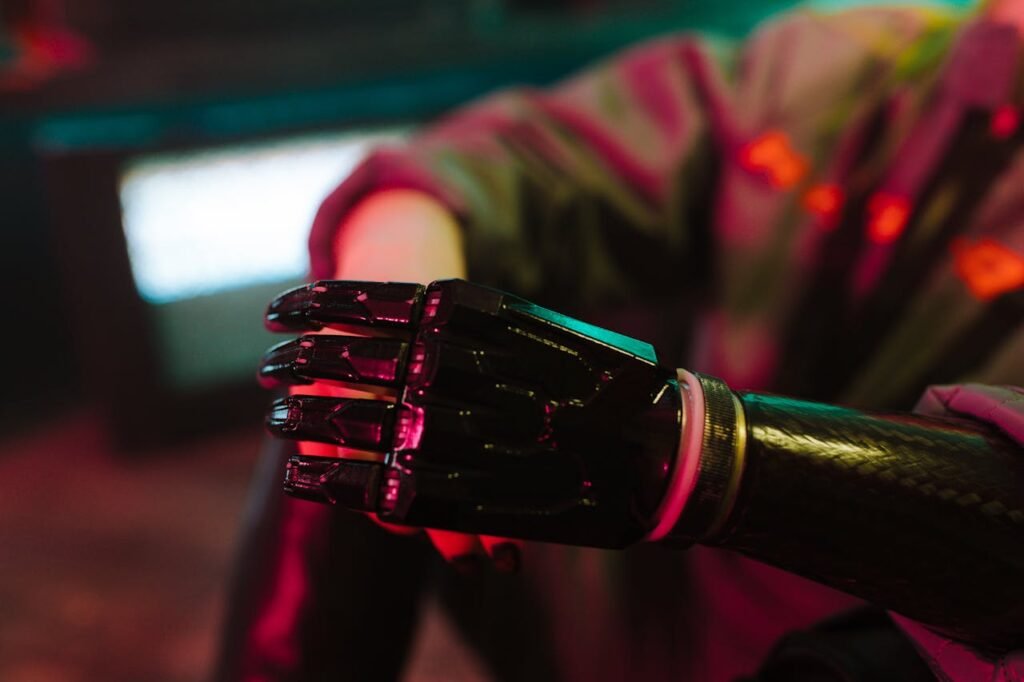
Partial hand prosthetics are designed for people who have lost some fingers, part of the palm, or specific sections of the hand but still have a functioning wrist or other parts of the hand intact. This is different from full-hand or below-elbow prosthetics, which replace larger portions of the arm.
Because you still have natural movement, these devices are designed to work with what you have, not replace it entirely. They are customized to integrate seamlessly with your residual hand so that movements feel more natural and less forced.
Why 2025 Is a Game-Changer for Users
The last few years have brought a wave of innovation in materials, sensors, and manufacturing. Today’s prosthetics are lighter, stronger, and smarter. They can respond to your muscle signals, give you better control over grip pressure, and even look so realistic that most people can’t tell the difference.
Advances in local manufacturing, especially here in India, also mean that these devices are more affordable and easier to maintain than ever before. This makes high-quality prosthetics accessible to many more people, not just those who can afford imported devices.
The Main Choices in 2025
Passive Partial Hand Prosthetics
What They Are
Passive partial hand prosthetics are devices that do not move on their own. They are crafted to replace missing fingers or sections of the hand, focusing on restoring appearance, comfort, and basic assistance with everyday actions.
Think of them as a protective and aesthetic extension of your hand. While they won’t actively grip or manipulate objects, they can make both hands look balanced again and remove the visual reminder of loss that many people find emotionally difficult.
How They Work
The design process starts with careful measurement and color matching. Modern passive prosthetics in 2025 use high-grade silicone and skin-safe materials that can be tinted to match your skin tone, freckles, and even nail color. The result is a natural, realistic appearance that blends in almost seamlessly.
Worn like a fitted glove or anchored securely to the residual hand, these prosthetics protect sensitive skin, help stabilize objects, and improve symmetry in hand movements. They’re extremely lightweight, so you can wear them for hours without feeling strain.
They are particularly good at supporting bimanual tasks where the intact hand does most of the active work—like holding a jar steady while the other hand opens it, or supporting paper while writing.
Who They Work Best For
Passive prosthetics are ideal for people whose daily life doesn’t require a strong or active grip from the missing fingers, but who still want improved comfort, protection, and appearance. This makes them a popular choice for office workers, teachers, shopkeepers, and anyone in a customer-facing role where confidence in appearance is important.
They are also an excellent first step for those new to prosthetic use. Some people start with a passive device to regain confidence in social situations, and later transition to a functional device once they feel ready.
Mechanical Partial Hand Prosthetics
What They Are
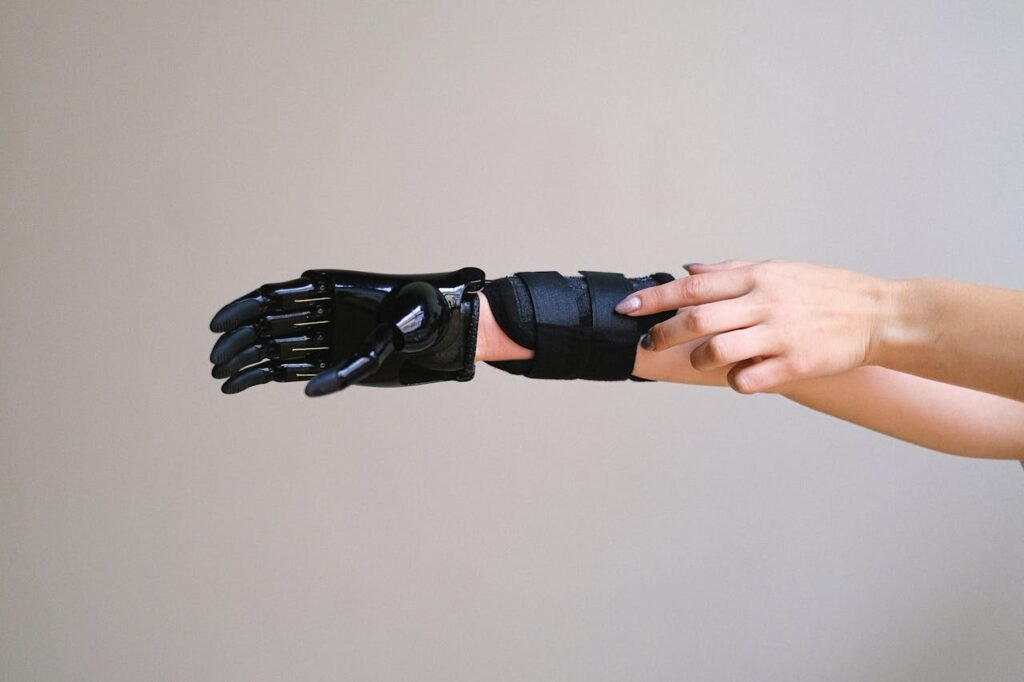
Mechanical partial hand prosthetics are designed for action. Unlike passive devices, they can open and close using mechanical linkages, but they don’t require electronics or batteries. They are powered by the wearer’s own movements—usually from the wrist, palm, or remaining fingers.
These devices are built to be strong, straightforward, and dependable, making them especially valuable in tough working conditions where durability matters more than high-tech features.
How They Work
Mechanical devices use simple but effective engineering. Cables, levers, or gears connect the prosthetic’s fingers to movement points in your hand or wrist. For example, when you bend your wrist downward, the cables tighten, causing the prosthetic fingers to close and grip an object.
Because they are purely mechanical, these prosthetics are more resistant to dirt, dust, and moisture—conditions that can damage electronic devices. They can grip tools, hold heavy items, and withstand repetitive movement without needing frequent repairs.
Many modern designs also allow for partial customization of grip strength and finger positioning, so they can be tailored for specific jobs or hobbies.
Who They Work Best For
Mechanical prosthetics are the go-to option for people with active, physically demanding lifestyles. Farmers, carpenters, factory workers, and mechanics often prefer these devices because they can handle heavy work, require minimal maintenance, and don’t rely on charging or complex software.
They’re also a good option for people in rural areas where access to frequent servicing might be limited. Their reliability and simplicity make them a long-lasting solution.
Myoelectric Partial Hand Prosthetics
What They Are
Myoelectric partial hand prosthetics are the most advanced devices available today. They use sensors to detect tiny electrical signals from your muscles—signals that are generated when you think about moving your missing fingers. These signals control small motors that open and close the prosthetic fingers, giving you precise and natural-looking movement.
In 2025, these devices are lighter, faster, and more responsive than ever before, making them feel more like a true extension of your body rather than an external tool.
How They Work
When you imagine closing your hand, the muscles in your residual limb contract, even though the missing fingers aren’t there. Myoelectric sensors detect these contractions and send instructions to the motors inside the prosthetic. The motors then move the prosthetic fingers accordingly.
Some myoelectric devices also feature multiple grip modes—like a pinch grip for small objects, a tripod grip for utensils, or a power grip for heavy items. Advanced models can even provide tactile feedback, letting you sense how firmly you’re holding something.
The power source is a rechargeable battery, usually lasting all day on a single charge. In 2025, batteries are lighter and more efficient, so there’s less bulk and more freedom of movement.
Who They Work Best For
Myoelectric prosthetics are best for people who want high function, versatility, and fine motor control. They’re ideal for office professionals, artists, chefs, engineers, and anyone who needs precision handling of objects in daily life.
They do require more training to master and regular charging, but for many, the extra effort is worth the unmatched capability they offer.
Comparing Your Options in 2025
Functionality and Performance
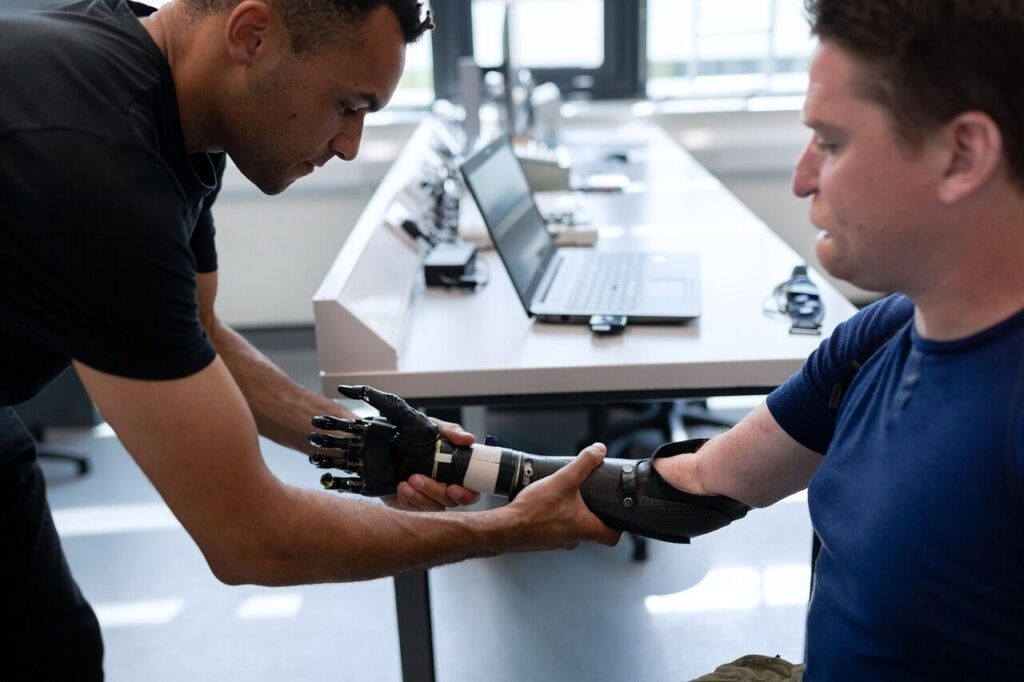
Passive prosthetics provide minimal mechanical function but are excellent for stabilizing objects and restoring a natural appearance. Mechanical prosthetics offer a reliable grip through body-powered movement, making them better for heavy or repetitive tasks. Myoelectric prosthetics provide the highest level of control and precision, allowing for multiple grip types and delicate handling.
When choosing, think about whether your daily tasks require strength, precision, or simply support. Someone working on a laptop may prioritize fine control over heavy lifting, while someone operating tools all day may value raw strength and ruggedness over advanced electronics.
Comfort and Wear Time
Passive devices are generally the lightest, which makes them easier to wear for long hours. Mechanical devices are slightly heavier but are well-balanced and ergonomic, reducing strain during repeated movements. Myoelectric devices, while more functional, can be heavier due to their motors and batteries—though in 2025, newer designs are much lighter than in the past.
Comfort also depends on proper fitting and materials. High-quality silicone liners, adjustable sockets, and breathable designs have become standard in modern prosthetics, ensuring that all three types can be worn for extended periods if properly fitted.
Maintenance and Durability
Passive devices require the least maintenance—occasional cleaning is usually enough. Mechanical devices need simple upkeep, like checking cables and joints for wear, but they can last for years without major repairs. Myoelectric devices require regular charging and occasional servicing for their motors and sensors, making them more dependent on technical support.
In environments with dust, heat, or moisture, mechanical devices tend to perform more consistently. Myoelectric devices work best in controlled environments or with users willing to take extra care to protect them.
Cost and Accessibility
Passive devices are generally the most affordable, mechanical prosthetics sit in the middle range, and myoelectric devices are the most expensive due to their advanced technology. However, local manufacturing in India has brought down costs significantly in 2025, making high-quality prosthetics—especially mechanical and some myoelectric models—much more accessible than before.
How to Choose Based on Lifestyle
For Active and Outdoor Work
If you work in farming, construction, manufacturing, or any job that demands strength and resilience, a mechanical prosthesis is likely the best match. Its rugged build and simple operation make it reliable in tough conditions, and it doesn’t need electricity or complex repairs.
For Office, Creative, or Precision Work
If your work involves typing, design, cooking, or small-object handling, a myoelectric prosthesis can give you fine motor control and multiple grip patterns. The training curve is higher, but the payoff in precision and versatility is worth it.
For Social Confidence and Light Function
If your main priority is appearance and comfort, especially in public or social situations, a passive prosthesis offers a natural look while giving enough support for light daily activities like holding papers or balancing small objects.
Real-World Examples from 2025
Aarav – Factory Supervisor
Aarav lost two fingers in a machine accident. His job involved both supervising and occasionally handling tools. He chose a mechanical prosthesis because it could withstand the heat, dust, and vibration of his factory floor while still allowing him to grip and move equipment when needed.
Sahana – Chef and Home Baker
Sahana’s partial hand loss made holding utensils difficult. She opted for a myoelectric prosthesis with multiple grip modes, allowing her to hold knives, whisks, and spoons securely. With training, she regained the speed and precision needed to run her kitchen efficiently.
Ramesh – Teacher
Ramesh wanted a prosthesis mainly to restore his hand’s appearance in the classroom and to help with light tasks like holding books and writing on the board. A passive prosthesis was his choice—lightweight, natural-looking, and perfect for his daily needs.
Making the Right Decision for You
Step 1: Understand Your Priorities
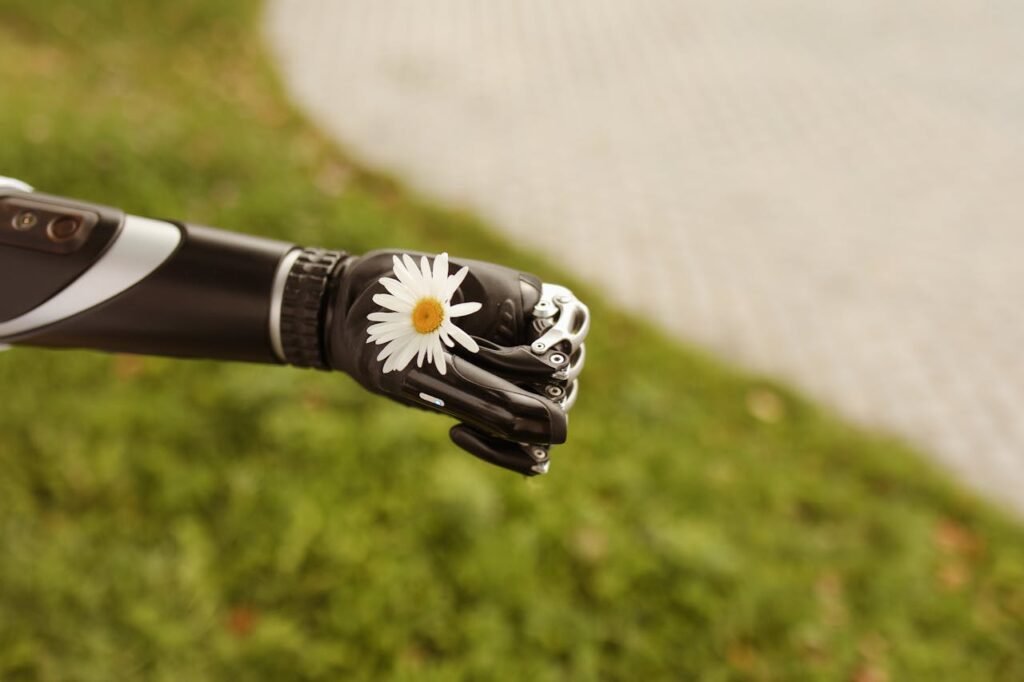
The first thing to do is ask yourself what matters most right now. Is it function? Appearance? Comfort? Cost? You may find that more than one factor is important, but ranking them will help narrow down your choices.
For example, if you’re in a hands-on job and need strength and grip above all else, a mechanical prosthesis might be the most practical. If you need delicate control for tasks like using a computer or handling small objects, a myoelectric device may be the right choice. If you mostly want to restore the natural look of your hand, a passive device could be ideal.
Step 2: Assess Your Daily Activities
Think about a typical day from start to finish. When do you most notice the absence of your hand or fingers? Is it while working, cooking, doing chores, or interacting socially?
The best prosthetic choice should solve the problems you face most often. This might mean a single device that does most of what you need or a combination—some people use one prosthesis for work and another for home life.
Step 3: Get a Professional Evaluation
A prosthetist can assess the condition of your residual hand, muscle activity, skin health, and mobility. This will reveal which prosthetic types are even possible for you. They will also check if your muscles can produce the signals needed for a myoelectric device or if a mechanical setup would be more efficient.
The Fitting Process
Initial Measurements and Scanning
Modern prosthetic design in 2025 often starts with 3D scanning your residual hand. This gives exact measurements that ensure the prosthesis will fit snugly without causing discomfort. If a realistic appearance is important, your skin tone, nail shape, and other details can be matched at this stage.
Socket Design
The socket is the part of the prosthesis that connects to your residual limb. Getting this right is crucial—it must be secure but not tight enough to cut off circulation. A well-designed socket will distribute pressure evenly, reduce friction, and allow freedom of movement.
Prototype Testing
Before the final device is made, many prosthetists will let you test a prototype. This trial period helps check comfort, weight, and balance. For myoelectric devices, it’s also the time to fine-tune the sensors so they respond accurately to your muscle signals.
Final Fitting and Adjustments
Once the prosthesis is completed, you’ll try it on and the prosthetist will make adjustments to ensure comfort and alignment. This is the moment when your prosthesis becomes a true part of your daily life.
Adapting to Your New Prosthesis
Start Slow and Build Up
In the first few days, wear your prosthesis for short periods. Gradually increase the time as your body adjusts to the weight, movement, and feel of the device. This prevents fatigue and skin irritation.
Practice Everyday Tasks
Begin with easy tasks—holding a cup, picking up a pen, or turning a doorknob. As you get more comfortable, move to more complex actions like tying shoelaces or chopping vegetables.
Use Both Hands Together
Even if your prosthesis is fully functional, it’s most effective when working with your natural hand. Practice bimanual activities so your movements feel balanced and efficient.
Follow a Training Program
For myoelectric and some mechanical devices, structured training can speed up adaptation. This might involve sessions with an occupational therapist or using an app-based rehabilitation program like the ones we provide at Robobionics.
Expect a Learning Curve
It’s normal to feel awkward or frustrated at first. But every small improvement counts. Many users find that after a few weeks, their prosthesis feels like second nature.
Long-Term Care for Your Prosthesis
Cleaning and Hygiene
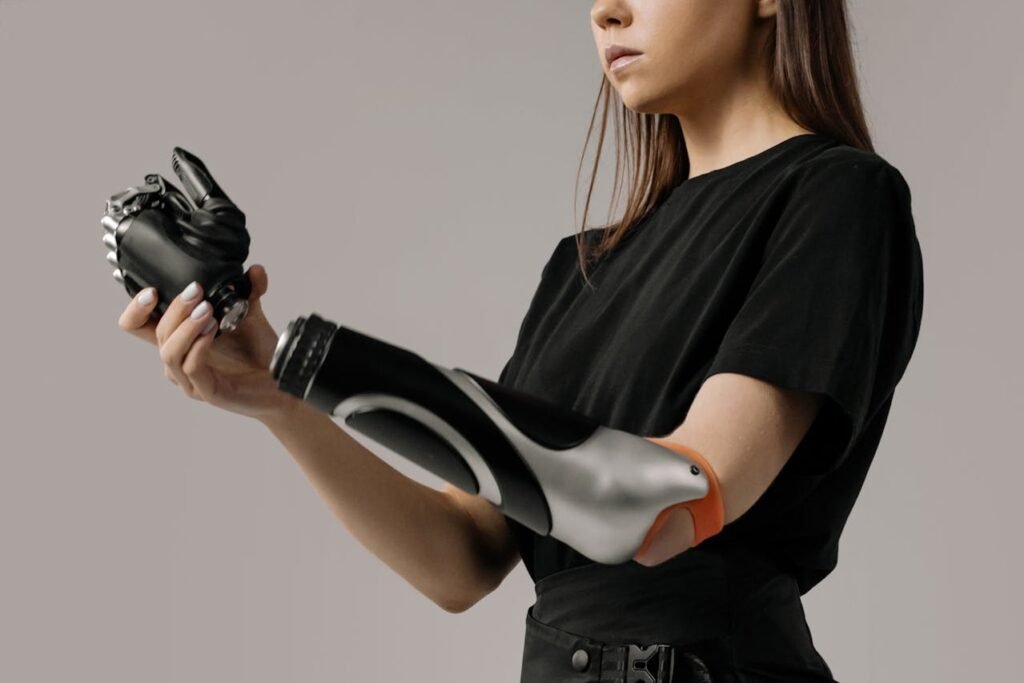
Keeping your prosthesis clean is one of the most important parts of long-term care. For passive and mechanical devices, a gentle daily wipe with a damp cloth will remove sweat, dirt, and dust. For silicone coverings, mild soap and water work well. Myoelectric devices require a bit more care—avoid getting the electronic components wet, and clean the socket and liners regularly to prevent skin irritation.
Establishing a cleaning routine will keep your prosthesis looking good, working smoothly, and free from odors or bacteria buildup. This is especially important in India’s warm and humid climate, where moisture can cause discomfort if not managed.
Regular Checkups
Just like any tool you use daily, a prosthesis needs regular maintenance. Passive devices may only need occasional inspections for wear or color changes. Mechanical devices should have their cables, joints, and linkages checked to make sure nothing is loosening or wearing down. Myoelectric devices need software updates, battery checks, and sensor calibrations to ensure smooth function.
Scheduling a checkup every six to twelve months can help spot small issues before they become big problems.
Protecting Your Prosthesis
While prosthetics are built to last, they still need protection from extreme conditions. Avoid leaving them in direct sunlight for long periods, as heat can damage materials. If you work in a dusty or wet environment, use protective covers or choose a model designed for those conditions.
For myoelectric devices, remember to carry your charger if you’ll be out all day and keep spare batteries if your model uses them. Mechanical devices may benefit from a backup set of cables or grip pads.
Common Challenges and How to Overcome Them
Skin Irritation
When you first start wearing a prosthesis, your skin may need time to adapt to the contact and pressure. This can cause redness or soreness. Wearing a properly fitted liner, keeping your skin clean and dry, and taking short breaks during the day can reduce irritation. If problems persist, a small adjustment to the socket fit can make a big difference.
Adapting to Different Environments
You might find your prosthesis feels perfect indoors but more challenging outdoors, especially in hot or humid conditions. Practicing in different settings helps you adapt. For example, gripping objects when your hands are slightly sweaty can feel different, so it’s worth training for these scenarios.
Balancing Function and Comfort
Some prostheses, especially myoelectric ones, offer incredible functionality but may feel heavier than passive devices. Others might be extremely comfortable but offer limited function. Finding the right balance often means testing different options or even owning more than one type of prosthesis for different situations.
Getting the Most Value Out of Your Prosthesis
Keep Learning
Your first few weeks with a prosthesis will teach you a lot, but don’t stop there. New techniques, accessories, and upgrades can make your device even more useful. Stay in touch with your prosthetist and follow communities of other users to exchange tips and ideas.
Set New Goals Over Time
What feels impossible in the beginning—like buttoning a shirt or using a knife—can become achievable with practice. As you master one skill, challenge yourself with another. This keeps you improving and helps you get the most from your device.
Maintain a Support Network
Family, friends, therapists, and even other prosthetic users can offer support, encouragement, and practical advice. Having people around you who understand your journey makes adapting to life with a prosthesis easier and more enjoyable.
How Robobionics is Shaping Prosthetic Choices in 2025
Building for Indian Lifestyles
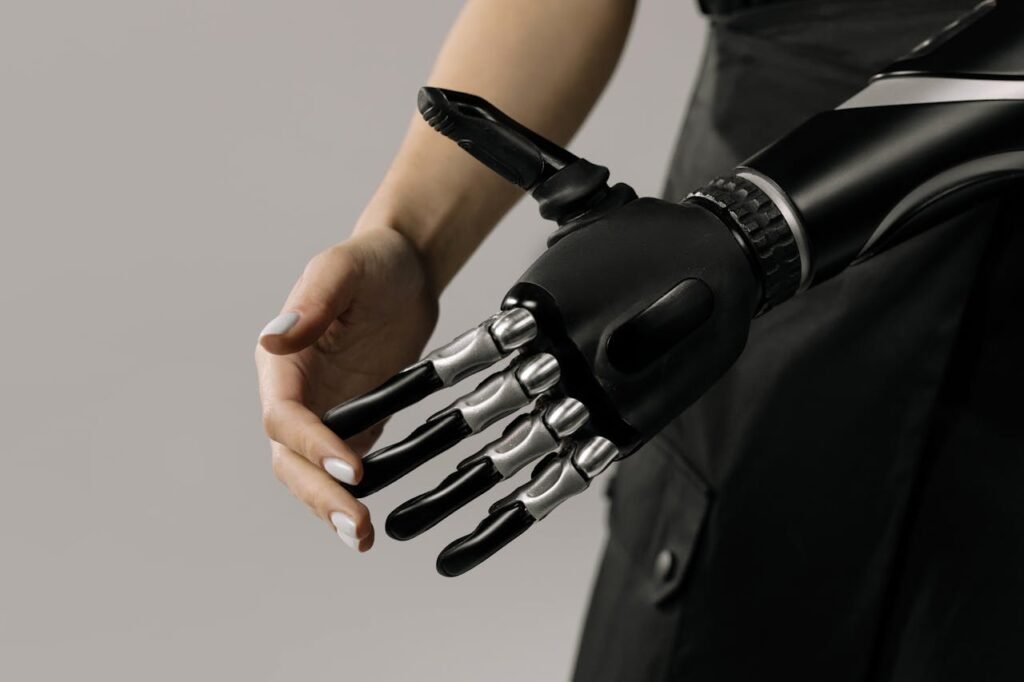
Robobionics designs partial hand prosthetics for real Indian conditions—whether it’s the heat of Rajasthan, the humidity of Kerala, or the dust of rural highways. Our devices balance durability, comfort, and affordability so that they work for your lifestyle, not just in a showroom.
Offering a Full Range of Options
From our highly realistic passive devices to our rugged mechanical solutions and advanced Grippy Bionic Hand with Sense of Touch™ technology, we provide options for every need. Whether you need to hold a pen, operate machinery, or perform delicate craftwork, we help you choose the right match.
Local Manufacturing for Affordability and Service
With 60 out of 64 components made in India, our prosthetics are not only more affordable but also easier to maintain. You don’t have to wait months for imported parts—we can service and adjust your device quickly so you stay independent and confident.
Walking the Journey With You
Getting fitted is just the beginning. We provide structured training, follow-ups, and access to our Gamified Rehabilitation App to make skill-building engaging. We also connect you with a network of users so you can share your experiences and learn from others.
Final Thoughts: Your Next Step Starts Now
Partial hand prosthetics in 2025 are not just about replacing what was lost—they are about giving you back control, comfort, and confidence in your daily life. Whether your goal is to return to work, enjoy your hobbies again, or simply feel more at ease in social settings, there is a solution designed for you.
The right prosthesis is one that fits your body, your lifestyle, and your goals. It might be a simple passive device that restores your hand’s appearance, a rugged mechanical prosthesis that powers you through heavy work, or a myoelectric device that gives you precise, natural movement. Each option can be life-changing when matched correctly to your needs.
You don’t have to make this choice alone. At Robobionics, we guide you through every step—from understanding your options to custom-fitting and training—so that your prosthesis becomes a part of your life, not just an object you own. We believe that independence, dignity, and mobility should be within reach for everyone, and we’ve built our entire mission around making that possible.
If you’ve been wondering whether it’s time to explore your options, there’s no better moment than now. The first step is simple—book a free demo with us at www.robobionics.in/bookdemo. Try the devices, feel the difference, and see what’s possible for your future.
Your next chapter doesn’t have to wait. It can start today, with the right choice for you.



